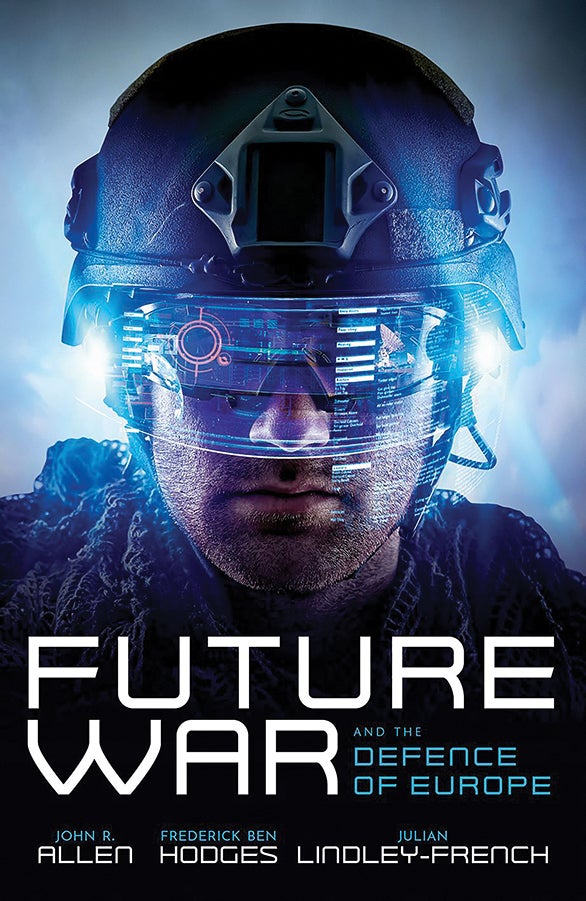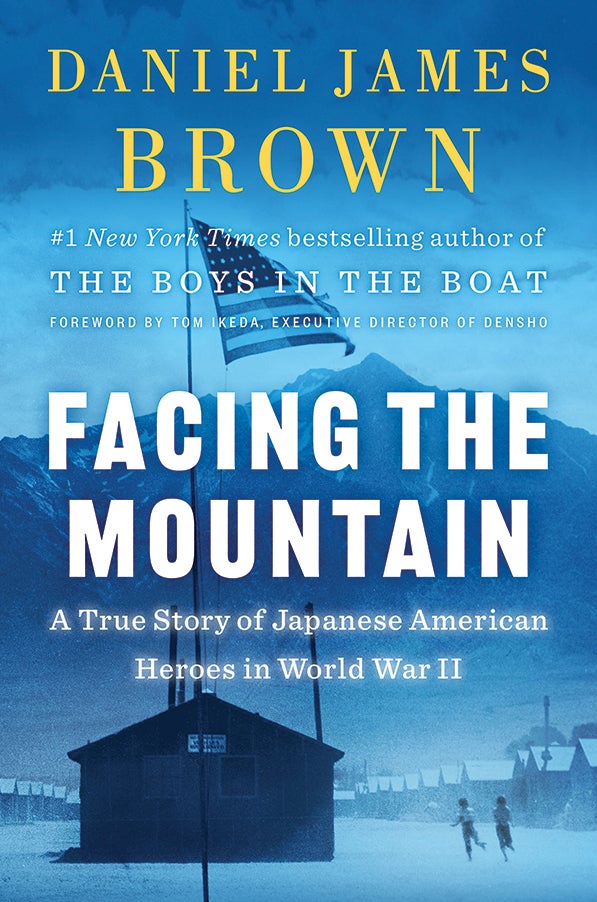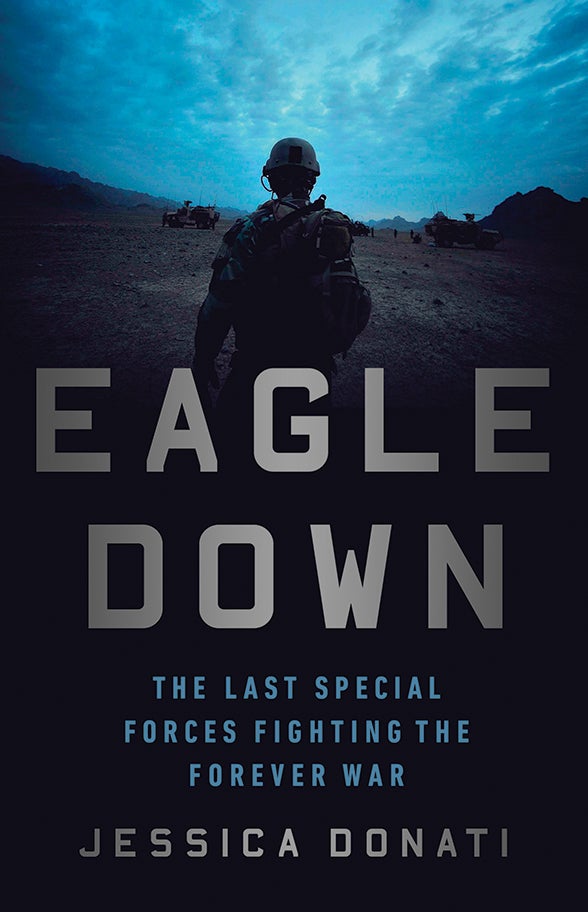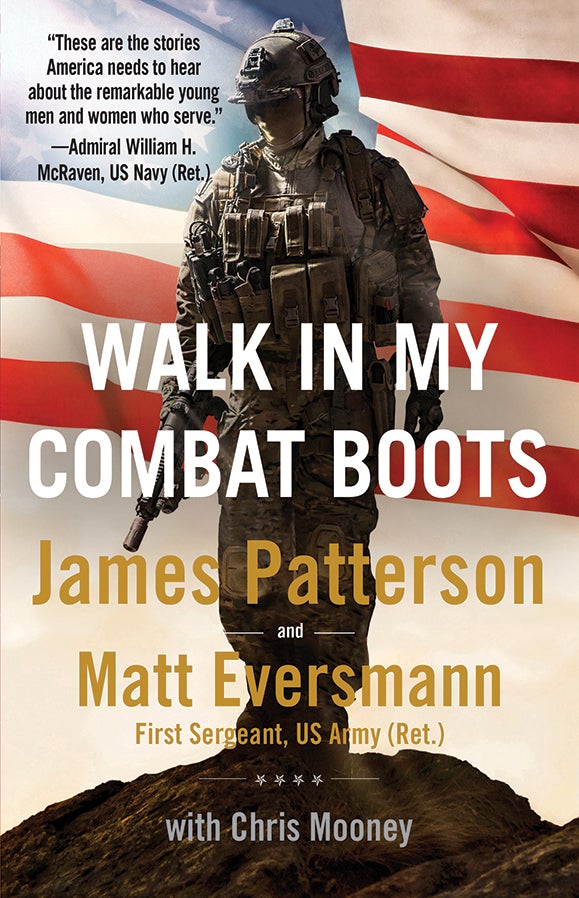July 2021 Book Reviews
July 2021 Book Reviews
Assessing the State of European Security

Future War and the Defence of Europe. John Allen, Frederick Ben Hodges and Julian Lindley-French. Oxford University Press. 326 pages. $32.95
By Lt. Col. Nathan Finney
What might an amalgamation of strategic analysis, practical experience and fiction tell us about our current and future security environment? The accomplished authors of Future War and the Defence of Europe have provided an answer.
Combining years of military leadership at various levels in Europe with decades of thought on European defense issues, retired Marine Corps Gen. John Allen, retired Army Lt. Gen. Frederick Ben Hodges and professor Julian Lindley-French construct a wide-ranging assessment of the strategic environment and provide prescriptions for Europe’s future security.
Future War and the Defence of Europe opens and closes with fictional defense scenarios taking place in 2030. Laid low by a Chinese-created global pandemic, U.S., British and European forces battle unaffected Russian and Chinese forces that assert limited strategic goals in Europe and the Pacific. In the opening scenario, American, British and European forces are unable to deter or defeat Russian and Chinese forces due to decades-long failures to invest in defense technologies.
In the closing scenario, the reverse is true. Western forces successfully recapitalized defense spending post-COVID-19, creating a situation in which Russia and China are unable to achieve their strategic objectives, suing for peace. The divergent results of these scenarios are designed to shock the reader into overcoming what the authors see as “Europe’s long post-Cold War strategic vacation.”
Between the fictional scenarios, Future War and the Defence of Europe includes three sections. Chapters 1–5 identify and describe Europe’s threat vectors, including the likely long-term effects of COVID-19; Russia on the eastern and northern flanks; instability on the southern, Mediterranean flank; and China’s global activities. Chapters 6 and 7 provide a kind of “net assessment” of the ability of either NATO or a collective of European nations to defend Europe. Finally, Chapters 8 and 9 frame and prescribe solutions for European defense.
Using the COVID-19 pandemic as a “hinge of history” from which Europe must decide its future, the authors worry that European nations will increasingly hollow out spending on national and collective defense for domestic, “human security” programs like health care and social security. As “no European state can any longer afford to both secure its people domestically and, at the same time, credibly defend them from external threats,” the authors advocate for a balance focused more on the latter than the former. This is compounded by technological trends that are driving war into more expensive and dangerous domains due to the speed with which they must be fought.
This book treads long-familiar ground detailing the decline of a defense-oriented European community and its ties to an Atlantic alliance structure. It also notes that the European security narrative must move beyond allusions to the Cold War.
The authors’ solutions for European defense include disengaging NATO from global commitments to refocus on the defense of Europe and deterring Russia, revamping defense planning for a high-tech future war, and reorganizing NATO and the European Union to balance three sets of competing requirements: national defense versus human security, power projection versus human safety, and strengthening defense while also engaging Russia diplomatically.
Unfortunately, Future War and the Defence of Europe is less focused on overcoming identified challenges, instead placing faith in more spending on technological solutions and a hoped-for greater European political unity. In a time fraught with internal tensions created by the rise of authoritarian and illiberal forces, prescriptions for focusing increased resources on external defense to the detriment of internal spending toward social cohesion (not to mention basic health and economic improvements in response to COVID-19 and its resultant recession) might come across as politically infeasible.
Lt. Col. Nathan Finney is a U.S. Army Goodpaster Scholar and a doctoral candidate at Duke University, North Carolina. He is a founder of The Strategy Bridge, the Military Writers Guild and the Defense Entrepreneurs Forum.
* * *
An Important Story of Heroism, Sacrifice

Facing the Mountain: A True Story of Japanese American Heroes in World War II. Daniel James Brown. Viking. 560 pages. $30
By Michael Lynch
The nation mourns the daily loss of World War II veterans, as “the greatest generation” passes into history. The social unrest of the past several years has made us long for a simpler time when everyone was on the same team and worked together toward a common goal. The reality of that past is much less clear-cut.
Facing the Mountain: A True Story of Japanese American Heroes in World War II promises the story of the legendary 442nd Infantry Regiment during World War II. It delivers much more. Author Daniel James Brown shows us what America looks like to an immigrant or member of an ethnic minority.
Our modern-day vision of World War II America is one of a people united in a common cause against totalitarian foes, ignoring the endemic racism of the time, which was enshrined in discriminatory laws and widespread xenophobia under the pressure of world war.
The backlash against anyone of Japanese (or any Asian) ancestry in the aftermath of Pearl Harbor parallels the reaction against Muslims and those of Middle Eastern descent after 9/11. For example, Brown relates the story of Raymond Matsuda who, after recuperating from combat wounds in a stateside hospital in 1944, attempted to get a haircut in a local barber shop. The barber refused to cut his hair, as he would not take any Japanese customers. Even when someone explained that Matsuda was a combat-wounded soldier and a U.S. citizen, the barber still refused, saying, “They all look alike to me.”
The “mountain” of the book title is both reality and metaphor. The combat experience of the nisei (American-born children of Japanese immigrants) begins at Monte Cassino, Italy, transitions to France and the Vosges Mountains campaign, then returns to Italy and the Alps.
But more importantly, “mountain” is a metaphor for the discrimination Japanese Americans faced and the uphill struggle they waged for acceptance. It is also a metaphor for Japanese Americans facing the consequences of their ethnic heritage as symbolized by Mount Fuji, the enduring cultural symbol of Japan.
Brown does not limit his story to the soldiers of the 442nd; the Japanese American heroes mentioned in the subtitle also refer to those at home, spending the war in internment camps. Brown reminds us that not all Americans felt like welcome members of the team.
One of the lesser-known aspects of the nisei soldiers’ experience is the division that developed during basic training at Camp Shelby, Mississippi, between those who grew up in Hawaii—“Buddhaheads” in mainland vernacular—and the mainlanders, who the Hawaiians nicknamed “kotonks.” They were all of Japanese ancestry, but there the similarities ended. The Buddhaheads were more casual and spoke in a Hawaiian pidgin intelligible only to them. Many had no personal experience of the internment camps. The kotonks were usually second-generation Japanese, older than the Hawaiians, and generally more serious and respectful of authority. Tensions between the two groups boiled over often, with many fights among the men. A visit to a nearby relocation center demonstrated the harsh reality of discrimination and united the unit in a way that was only exceeded by the bonds of combat.
The military historian eager for a strictly operational history of the 442nd should look elsewhere. There are quibbles with ranks and military terminology, and the courageous details that made the 442nd Infantry the most decorated unit in U.S. Army history for its size and time in combat are consigned to a short epilogue. But Brown’s vivid narrative tells a more important story about heroism and sacrifice, one that should be read by anyone who hopes to understand more about “the greatest generation” and American history.
Michael Lynch is a research historian at the U.S. Army Heritage and Education Center and an assistant professor at the U.S. Army War College, both at Carlisle Barracks, Pennsylvania. A retired U.S. Army officer, he is the author of Edward M. Almond and the U.S. Army: From the 92nd Infantry Division to the X Corps. He has a doctorate in history from Temple University, Philadelphia.
* * *
Forces Face Ambiguity in Afghanistan

Eagle Down: The Last Special Forces Fighting the Forever War. Jessica Donati. PublicAffairs. 320 pages. $28
By Col. Keith Nightingale, U.S. Army retired
If you were ever looking for an answer as to why America can’t seem to win its prolonged wars, read Eagle Down: The Last Special Forces Fighting the Forever War by Jessica Donati. Any soldier will recognize the agony and frustrations endured by front-line Army personnel giving 110% while their leaders, maddeningly, seem to give less.
Donati knows what she writes. After moving to Kabul, Afghanistan, in 2015 to head The Wall Street Journal office there, she repeatedly embedded with Afghan forces that partnered with U.S. special operations forces. She was able to observe the myriad efforts of U.S. and NATO elements as they struggled to implement meaningful programs. The Taliban, with markedly fewer resources but a firm mindset, consistently disrupted those plans.
Her physically close association, combined with a good journalist’s detached, analytic mind, provides a factual snapshot of the players from the very senior to the grunts on the ground as they struggle to discern the nature of the Afghan environment and determine what might work. Her narrative shows that the dedication of the grunts was often stymied by political and self-imposed restrictions. The frustration at all levels as to what exactly American policy was and how it was interpreted at ground level is well described. Spoiler alert: Grunts lose.
Donati centers her story on the efforts of two Special Forces officers, working with their Afghan allies, to wrest back control of two cities lost to the Taliban. She deftly describes the actions of the American chain of command as it balanced ground truth with political imperatives.
The author’s accounts of the Afghan mentality are coincidental with my own experience in that theater. She makes it clear that the host nation has a variety of complicated mindsets and motivations largely unanswered by American policies. Government corruption at all levels, questionable loyalties and a much different view as to what war is about continuously disrupt local U.S. presence and program implementation. Donati does a great service by demonstrating that failure to succeed is almost solely due to our continuous inability to mold policy to ground reality.
The heroes are those Army Special Forces elements on the leading edge attempting to both understand local conditions and to develop either influence or hegemony. U.S. generals are depicted as prisoners of either bad policy, a desire for risk avoidance or confusion over what is the right answer. They appear as good people given a bad job.
Most engaging is the verdict of the book’s most prominent personality, a Special Forces major with multiple tours on the cutting edge, to simply buy off the warring factions rather than fight the unwinnable environment. This was the conclusion of the British when they “occupied” the country in the mid-1800s, and it largely worked.
Donati’s greatest gift is that she states no personal emotions nor wrings any conclusions out of the narrative. That is the reader’s task. Rather, in a highly readable format, she simply lays out the facts of an environment, the issues as they unfold, the responses of the chain of command and the results of a specific event. There are no good guys/bad guys, just real people, real events and real outcomes.
This book should be required reading for any National Security Council member and, more importantly, any president before they decide to deploy American citizens to far-distant lands with ambiguous guidance or uncertain end states.
Col. Keith Nightingale, U.S. Army retired, served two tours in Vietnam, participated in the 1980 Iran hostage rescue attempt and managed U.S. Southern Command’s program to capture Colombian drug lord Pablo Escobar. After retiring from the Army, he joined Science Applications International Corp., known as SAIC, and managed several security teams in Iraq and Afghanistan. He is the author, most recently, of Phoenix Rising: From the Ashes of Desert One to the Rebirth of U.S. Special Operations.
* * *
Plucking Threads From the Fabric of War

Walk in My Combat Boots: True Stories from America’s Bravest Warriors. James Patterson and Matt Eversmann With Chris Mooney. Little Brown and Co. 416 pages. $30
By Col. Cole Kingseed, U.S. Army retired
England’s 18th century poet and essayist Samuel Johnson once proclaimed, “Every man thinks meanly of himself for not having been a soldier, or not having been to sea.” In an extraordinarily well-written anthology of untold stories of America’s bravest warriors, authors James Patterson and Matt Eversmann chronicle the personal sacrifices of ordinary Americans who have served their country in times of war and peace.
Patterson is one of the world’s bestselling authors and novelists. His co-author, retired 1st Sgt. Eversmann, served with distinction as a member of the 10th Mountain Division and the 75th Ranger Regiment. Their collaborator, Chris Mooney, is, like Patterson, an international bestselling author of mystery thrillers. In the spirit of World War II correspondent Ernie Pyle, the authors are master storytellers.
Examining both conventional and unconventional combat in Somalia, Iraq and Afghanistan, they divide the narrative into four sections. The initial collection of personal stories, “A Call to Duty,” highlights the motivation for individuals joining the armed forces in wartime.
Next, Patterson and Eversmann explore training in the most strenuous conditions. Maj. Gen. Ron Silverman’s story is particularly engaging. During his 41 years in uniform, Silverman served in a variety of leadership positions, culminating as commander of the U.S. Army Reserve’s 3rd Medical Command at Fort Gillem, Georgia. From 2004 to 2008, he oversaw the medical care for U.S. troops in Iraq. A dentist by trade, Silverman once repaired a broken tooth for Saddam Hussein after Saddam’s capture by U.S. forces. In casual conversation, the Iraqi dictator informed Silverman that he had wanted weapons of mass destruction but failed to obtain them.
Readers will also be fascinated by the saga of heroes in “In Country.” Take Staff Sgt. Mike Evans. In 1992, Evans commanded a reconnaissance section in the 87th Infantry Regiment. Deploying to Mogadishu, the capital of Somalia, Evans details the dangers of urban combat, escaping alive thanks to his vest after being shot in the chest at close range. The close encounter with death changes his outlook as he realizes, “I just got a second chance at life—and I’ve got a lot more to do.”
“On the Home Front” next examines stories far from the battlefield, reminding the reader that the harsh realities of war never leave those who have experienced the rigors of combat. Each of these veterans’ accounts revolves around personal leadership of character, competence, moral courage and individual sacrifice.
Perhaps the most gut-wrenching tales derive from the book’s coda: “Memorial Day.” Shivan Sivalingam relates the story of two teammates with whom he served in Afghanistan. Both friends were killed in action on the same day, causing Sivalingam to reflect: “While some of us by good fortune may not have a loved one or even an acquaintance who has perished in the conflicts, isn’t that all the more reason for those of us who have lost someone to share their stories?”
Ginny Luther describes how her son, Lt. Robert “Bart” Fletcher, was killed by a soldier in his company who was suffering from post-traumatic stress disorder. Lastly, Marine Cpl. Rory Hamill, to whom Walk in My Combat Boots is dedicated, details his ordeal with PTSD and his receipt of the Purple Heart, given by President Barack Obama. From the anguish of their bereavement, each of the narrators decides to assist others to benefit their own experiences.
Walk in My Combat Boots should be mandatory reading for every American citizen. These stories demonstrate that “the greatest generation” is not confined to the World War II era. Those who currently wear the military uniform are worthy successors to those American soldiers, sailors, airmen and Marines who have shed their collective blood on the altar of freedom throughout our nation’s history.
Col. Cole Kingseed, U.S. Army retired, a former professor of history at the U.S. Military Academy, West Point, New York, is a writer and consultant. He has a doctorate in history from Ohio State University.

